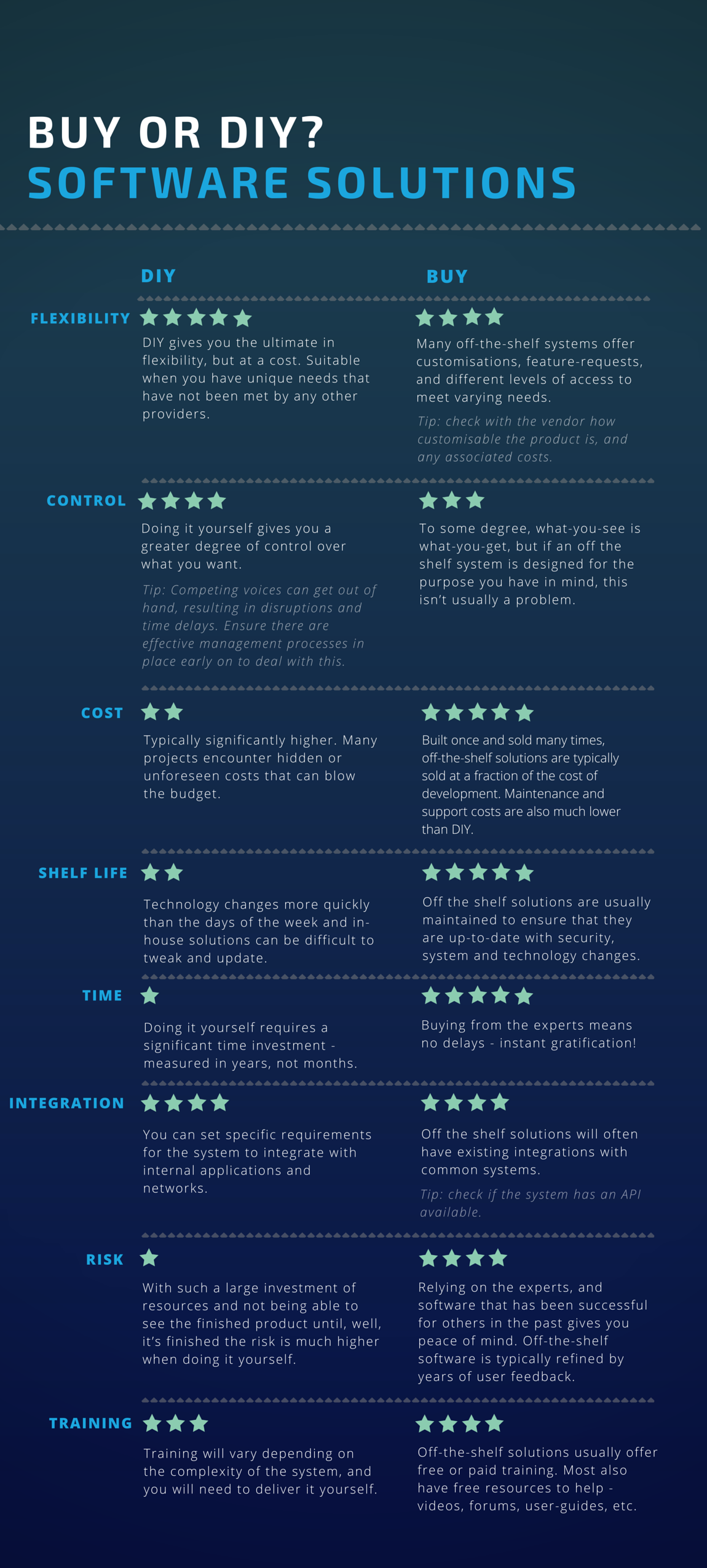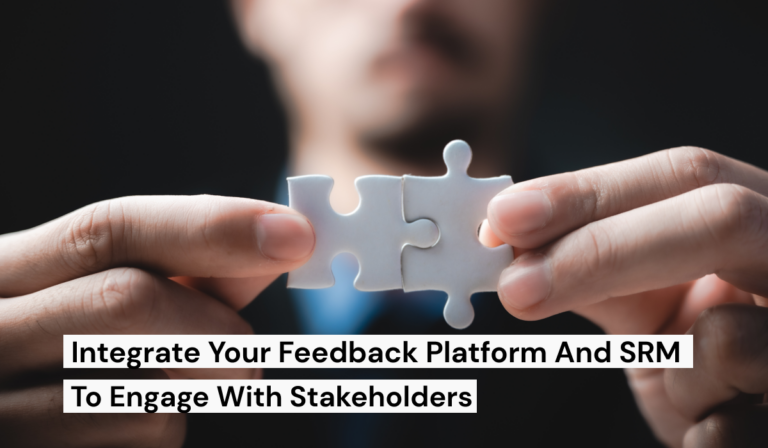Choice is ubiquitous in our world; we choose what to wear in the morning, what to eat, what to watch on Netflix, and, of course, whether to perform certain business functions in-house or purchase from an external provider!
More and more organisations are realising the importance of a stakeholder engagement strategy to help achieve organisational goals, and choosing the right software solution to manage this is critical if you want to take your business to the next level.
There are typically two paths that can be taken to find a software solution:
- DIY: Do-it-yourself
- Buy: Purchase an existing solution.
Designing, delivering, and implementing a system in-house can be a good option if the human, time, and monetary resources are available to do so. If your organisation doesn’t have the expertise in-house, doesn’t have time to wait for an in-house solution or doesn’t have the budget to develop a solution from scratch, outsourcing or purchasing an existing solution are common alternatives.
To help you decide whether DIY or Buy is right for you when choosing a Stakeholder Management software solution, we’ve summarised the pros and cons of each approach in a handy table below. We will also take a look at the journey that Water Corporation, Western Australia (WCWA) took to find their ideal solution.
A Case in point: Water Corporation
The DIY or Buy consideration was made by Water Corporation, Western Australia’s principal supplier of water, wastewater and drainage services, who needed an information system to better support stakeholder management.
Due to the unique needs of the organisation, and the lack of any existing solution in the market (bearing in mind this was in the early 2000’s), Water Corporation was initially hesitant about purchasing an off-the-shelf solution.
However, Water Corporation’s John Steyntjes, who was responsible for implementing the organisation’s stakeholder engagement framework and supporting software (which is now considered best practice), said they soon realised an in-house system would have its own challenges.
It was a mainframe system, which we tried to integrate with our other corporate systems, but the task became too complex and would have been too expensive.
“When we purchased Consultation Manager in 2009, it was implemented at a very low set up cost and small annual licence fee. Although off-the-shelf solutions are commonly conceived of as plug-and-play options with little or no customisability, we were able to make several customisations at minimal cost. Consultation Manager has worked with us to tailor the system to meet our needs, and with little customisation and manual input, we’ve been able to link it to our corporate document management system, Outlook emails and the Microsoft applications.”
That’s five stars for Buy over DIY on measures of flexibility, control, cost and time.
“And, most importantly, Consultation Manager has continued to help Water Corporation meet our business objectives over the years. By going from multiple systems and databases to having one centralised database, relationship managers and communication officers are able to share information relating to key customers and important stakeholders, which saves time and has improved engagement performance,” Mr Steyntjes said.
Consultation Manager now hosts over 200 projects for Water Corporation, with around 100 regular users and supports the following relationship management programs for the Water Corporation:
- Community engagement
- Stakeholder engagement
- Account management for major business customers
- Media and Government Relations
- Schools Education
And what about ongoing costs?
Managing the database in-house has saved us thousands of dollars, plus the contact details are much more accurate.
Consultation Manager also provides training and has a dedicated development and support team, which is a key consideration given the pace at which technology is changing.
At minimal cost and effort you can get under way quickly with a system like Consultation Manager, have more system flexibility and achieve your desired outcomes.
Learn how other organizations manage small and large scale engagement projects with a stakeholder management system. Download the free information sheet for your industry.

RELATED READING
10 Reasons Why a Stakeholder Management System is Your Next Competitive Advantage
How Proactive Stakeholder Engagement Helped Reduce Ministerials by 90%
Innovation and efficiency: Managing your database with Stakeholder Self Manager
Notes from the CEO: Data, Data, Everywhere!
7 Benefits (and some Common Pitfalls) of Stakeholder Databases




